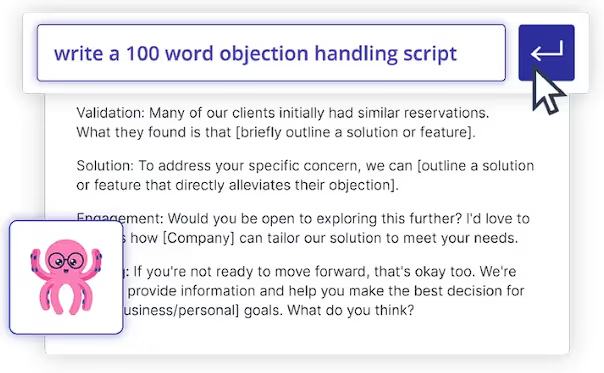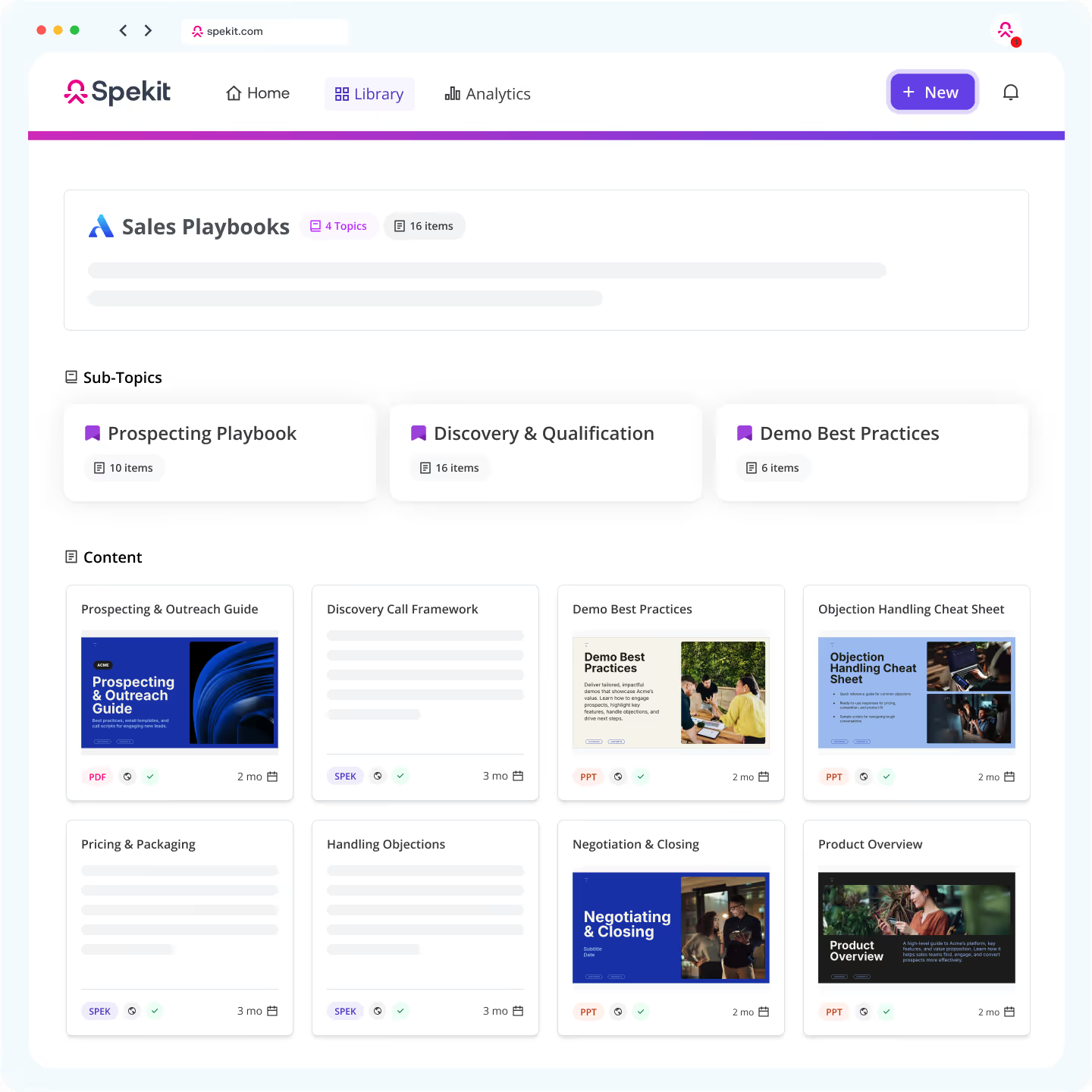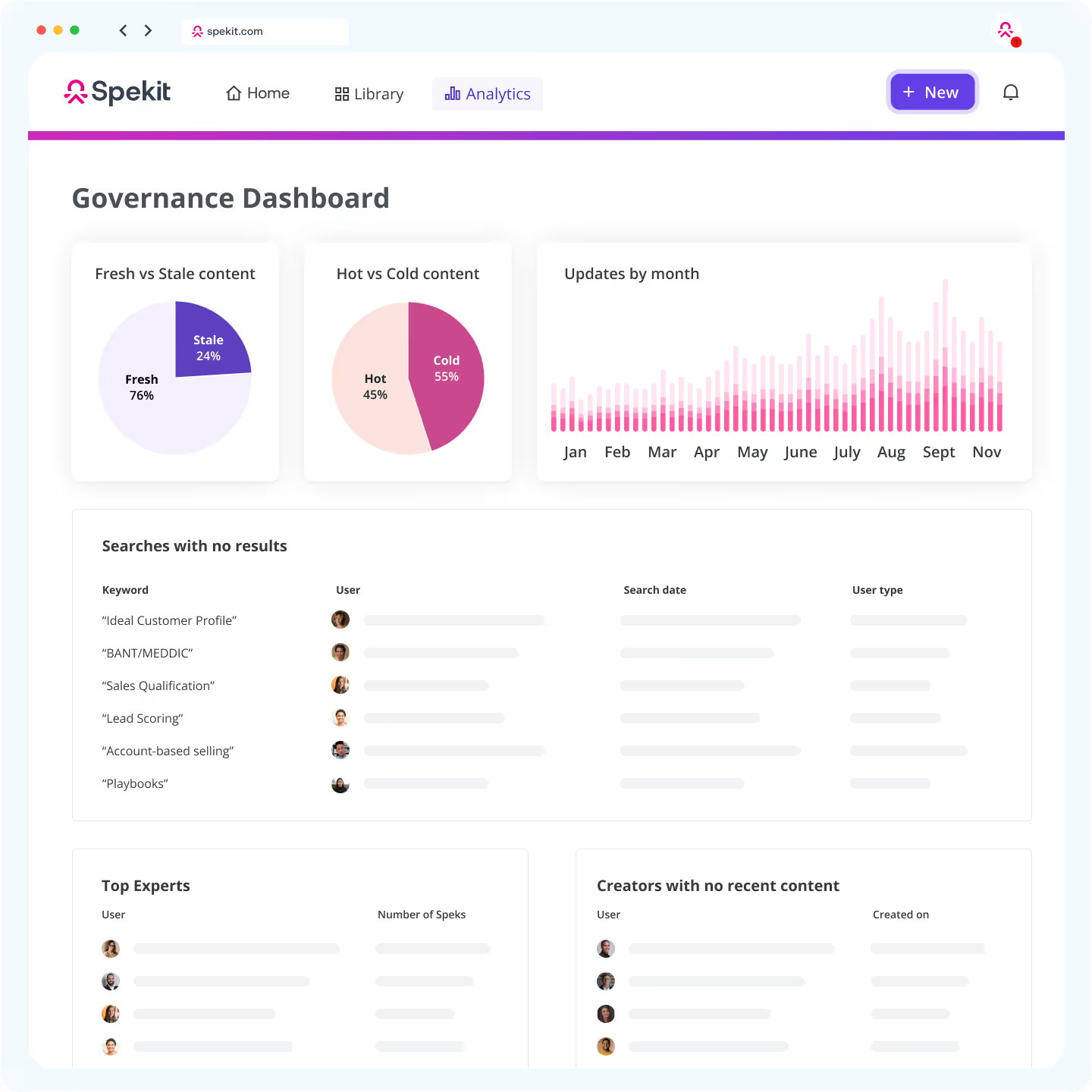On paper, it looks like things should be moving in the right direction.
You’ve got a team hustling hard: dials, meetings, demos. But the revenue results...don’t match.
When you look a little deeper, some reps are miles ahead. Others can’t keep up. One deal closes fast, the next drags on for months and disappears.
Data’s either stale or missing. And without clean signals, it’s hard to coach, hard to plan, and harder to grow.
Underneath it all, you’re carrying too many hidden costs:
- Time lost chasing unqualified deals
- Revenue left on the table from discounting or under-selling
- Tension between sales, marketing, and success over lead quality and churn
- A few top performers carrying the number while everyone else stalls
Sound familiar? You might have a problem with sales performance.
This article breaks down the most common sales performance issues. What they look like, what causes them, and how to start fixing them.
What is sales performance?
Sales performance is the measure of how effectively sales efforts produce results against set goals. It reflects both the quality and consistency of outcomes (like revenue, deal velocity and retention) at the individual and team level.
Sales performance is often tracked through a mix of quantitative and behavioral metrics:
- Revenue generated
- Win rate
- Quota attainment
- Deal velocity
- Sales activity (calls, emails, demos)
- Renewal and upsell rates
Enablement and RevOps teams use this data to identify bottlenecks, coach reps more effectively, and adjust strategy. Strong performance metrics also help leadership forecast accurately, manage risk, and allocate resources where they’ll matter most.
It’s not about chasing numbers for the sake of it. Performance metrics create feedback loops. They show what’s working, where support is needed, and how strategy is playing out in real conversations with buyers.
A practical example: If deal size is shrinking, that might point to discounting pressure or misaligned qualification. If reps with shorter onboarding are outperforming, that could mean recent training updates are landing well. Without performance data, those patterns stay buried.
Done well, sales performance tracking helps teams work with more clarity and fewer assumptions. It supports better coaching, better planning, and better outcomes, without relying on guesswork.
Why is sales performance so important?
Sales performance shows how well your sales efforts are working and where they’re falling short. It helps you understand what’s actually driving revenue, how reps are using their time, and whether your sales model holds up under pressure. Without it, it’s easy to misjudge progress or miss signs that something’s off.
Performance metrics offer structure for decisions. If close rates are down, or certain reps consistently miss quota, you have a starting point to investigate. That might lead to a change in how discovery calls are handled, how accounts are distributed, or how onboarding is paced. The goal isn’t to micromanage. It's to reduce guesswork and improve how the system works.
Sales leaders also rely on this data for planning. Growth targets, hiring decisions, and territory assignments all hinge on realistic performance expectations. If those expectations are built on assumptions, the fallout shows up fast in missed numbers, overworked teams, and deals stuck in limbo.
For enablement and operations teams, performance data is even more critical. It informs what kind of training is needed, which tools are being underused, and where reps lose momentum in the sales process. Instead of rolling out broad initiatives, they can make targeted updates that actually support day-to-day selling.
A company we worked with saw a consistent delay in closing mid-funnel deals. The instinct was to update the product demo. But when they reviewed sales performance data, the issue wasn’t the demo. It was lack of follow-up. Reps were juggling too many accounts and missing key moments to re-engage. They added simple automations and shifted workload across the team. Close rates improved without touching the demo.
It’s also worth mentioning the role performance data plays in coaching. Vague feedback like “try harder” doesn’t help anyone improve. But data can show a rep where they slow down, where they lose deals, or where their activity drops off. This leads to more specific conversations and practical adjustments.
The point isn’t to create pressure. It’s to give the team and the business visibility. With that, it becomes easier to adapt, support people effectively, and make better decisions. In a role where variables shift constantly, that kind of clarity is essential.
Read: How to improve sales rep performance.
The role of sales leadership in driving performance
Sales performance is heavily influenced by how teams are structured, managed and incentivized. Leadership choices affect how people show up, how work gets done, and whether performance scales or stalls.
Team structure sets the baseline.
When roles are clearly defined, such as separating outbound prospecting from closing, each rep can focus, improve, and be measured fairly. When roles are blurred or change frequently, accountability gets diluted.
A good structure matches how customers buy and gives leaders visibility into each stage of the process.
Leadership style plays out in day-to-day execution.
Teams perform better when managers give direct feedback, use data to support decisions, and stay involved in the details without micromanaging. A purely results-driven approach often misses context.
On the other hand, too much leniency can leave performance issues unresolved. The balance comes from setting expectations early and using performance metrics as conversation starters, not just scorecards.
Incentive plans shape behavior just as much as leadership style.
If comp plans reward closed revenue without considering margin, product mix, or retention, reps will naturally optimize for speed over quality. If incentives vary too much across roles or change frequently, they create confusion.
Effective plans are consistent, transparent, and tied to both team and business outcomes. They support the right behaviors without creating internal competition or short-term thinking.
Sales performance also depends on cross-functional alignment, especially between marketing, sales, and customer success. RevOps often owns this integration. When teams share systems, goals, and metrics, it’s easier to spot what’s working and what’s being missed. This clarity helps eliminate finger-pointing and lets teams focus on the real issues.
That alignment directly impacts forecasting and pipeline health.
If sales is measured on stage progression, while marketing is focused on lead volume and CS on renewal rates, the forecast won’t reflect reality. A connected view—from first touch to closed-won and beyond—helps leadership identify deal risk, adjust resource planning, and spot trends early.
Leadership isn’t just about motivating reps.
It’s about building a system that’s transparent, adaptable, and anchored in the actual work. That includes how roles are set up, how performance is tracked, and how each part of the revenue team fits into the bigger picture. When those elements are in place, performance becomes easier to improve because everyone is solving for the same goals.
How can you measure sales performance?
Sales performance can be measured through sales metrics such as revenue, sales growth, average deal size, conversion rate, and customer acquisition costs.
These metrics focus on specific aspects of your sales; for example, average deal size reveals the average financial worth of each sale. Let’s explore how this works in more detail.
1. Connect KPIs to Business Goals
Key performance indicators (KPIs), also known as key success indicators or key performance indexes, are quantifiable financial or non-financial metrics used to measure a business’s performance.
To measure your sales performance, you must ensure that these indicators align with your business goals. So, for example, if one of your business goals is to increase revenue by 30% in the next 90 days then the perfect KPI to measure this goal would be “Revenue growth rate,” which measures the growth in your revenue over a specified period.
Here’s how to connect KPIs to business goals:
- Identify the goal
- Confirm that the goal is SMART (Specific, Measurable, Achievable, Realizable, and Time-bound)
- Identify how to measure the goal (E.g, number of sales, % of the increase, and number of customer retention)
- Choose a KPI that corresponds with the identified measure (E.g., sales volume, sales/revenue growth, and customer retention rate)
2. Match Metrics to Performance Goals
Your sales metrics or KPIs should align with your performance goals to ensure that you and everyone on your sales team take daily steps to achieve your broad business goals. These performance goals may be created for sales teams or individual salespeople.
Let’s say you’ve chosen a KPI like sales volume to measure the number of sales you make; you can match it to a performance goal like “Upsell product X to every walk-in customer who buys product Y to increase daily sales by 50%.”
Here’s how to match metrics to performance goals:
- Choose a sales metric/KPI
- Identify what business goal this KPI is used to measure
- Breakdown the identified business goal into actionable steps that can be done daily
What sales performance metrics should you measure?
Measuring sales performance using the appropriate sales performance metrics can easily be the difference between a business that experiences year-on-year growth and one that struggles.
Here are some of the best sales performance metrics to track:
Sales Team Metrics
Revenue generated
Revenue generated is the total dollar value of sales closed by each sales team in a period. This metric tracks the dollar value of all the sales closed by each sales team in a period. It can be used to identify which teams are the most effective by comparing their revenue against each other. Individual teams can also compare their revenue generated over time to analyze whether they are experiencing a growth or a decline in their generated revenue.
If you’re looking for a revenue enablement platform that enables your sales team to close more deals, try Spekit. Spekit supports sales teams by providing in-app content and in-context recommendations to guide sales reps during prospecting and engaging customers.
Sales cycle length
The sales cycle length measures the time it takes for your sales team to convert a lead into a buyer. Usually, a shorter sales cycle time is ideal as it indicates that the sales team closes sales much quicker.
Win rate
Win rate is a sales metric that measures how many deals and opportunities your sales team wins compared to lost ones. A high win rate indicates a strong selling strategy, and your sales team can quickly convince prospective buyers to initiate a purchase.
Sales content metrics
Sales content metrics, such as engagement rate, click-through rate, and content reach, measure the effectiveness of your sales content. A high sales content metric, such as engagement rate, increases awareness of a business’s services and boosts sales.
Spekit can help you improve your sales content metrics. It not only centralizes content creation, management, and sharing but also has an AI feature, “Spekit AI,” that sales reps can use to generate baseline content for playbooks and sales scripts. For more practical examples, check out these ways to use AI in sales enablement to boost team efficiency.

Individual Sales Team Member Metrics
Quota attainment
Individual sales team members are usually given a quota to meet before the end of a certain period. At the end of this period, each person’s sales should be matched against their quota to assess performance.
Average deal size
This is a salesperson's average money value of sales in the period. The average deal size metric shows the quality of each salesperson's sales and helps identify salespeople who regularly close high-value deals.
Activity metrics
This is important for businesses and teams interacting directly with customers. Activity metrics include the number of sales calls and text messages a sales rep handles. It is used to measure the productivity of team members.
Retention rate
The retention rate metric measures the percentage of customers that a salesperson can retain over time. This metric also shows that the salesperson can build trust and maintain healthy customer relationships.
How to Improve Sales Performance
Now that we’ve explained how to measure your sales performance using sales metrics and KPIs, let’s see how you can improve your sales performance.
1. Optimize Your Sales Content

Content marketing is one of the top ways for salespeople to reach prospects, with 76% of marketers generating product demand and leads from their sales content. However, poorly created content will produce adverse results, so if you want to improve your sales performance, you should optimize your sales content.
Spekit saves you a lot of productive time by automating content optimization. The platform has over 100 templates you can customize for your sales playbooks and guides.
SpekitAI also enables you to create optimized sales content in minutes and convert lengthy documentation to bite-sized content that sales reps can easily digest, eliminating information overload.
2. Connect Your Sales Reps with the Right Content
.avif)
Salespeople often work with multiple content scattered across different folders. This reduces their productivity and affects their workflow. Connecting your sales reps with the right content at the right time, wherever they need it, means they no longer have to dig through lots of files to find the information they need, a game changer for your sales reps.
With Spekit, you can automate the delivery of sales content to your sales reps. Spekit allows users to share sales content in any sales software they use. It also supports embedding sales content right into their workflow.
Sales reps can get real-time in-app notifications when new content becomes available to them, keeping them connected to available content all the time.
3. Conduct Regular Sales Performance Reviews

Whatever you don’t measure, you can’t manage; if you can’t manage it, you simply cannot improve it. Regular sales performance reviews measure the effectiveness of your sales effort to identify opportunities for improvement.
You can review your sales performance and analytics by comparing the previous period’s sales with current or budgeted sales with actual sales. You can also use sales metrics to measure your sales performance.
What matters the most is the strategic decisions you take from the insight you get from reviewing your sales; that’s how you improve performance.
4. Provide Just-in-Time Sales Coaching

Sales training increases performance by up to 20%. This increased performance contributes toward better sales performance and more revenue. For teams just getting started, free sales training resources can offer a cost-effective way to build foundational skills before investing in advanced tools or coaching.
But don’t just stop at providing regular training for your staff. Incorporate just-in-time sales coaching in your process to provide employees with bite-sized sales content when needed.
Spekit supports sales reps' onboarding and on-the-job training, surfacing learning content for them right in their apps and tools. Spekit doesn’t just provide learning content; it also ensures content retention, offering in-app quizzes to assess knowledge and reinforce learning.
5. Invest in Sales Enablement
Sales enablement tools are the future of sales and marketing as they seamlessly connect your content, marketing, and sales cycle, creating an integrated loop in your sales process. These tools also have support for business intelligence and CRM to streamline customer data analytics and relationship management and also provide valuable insights for data-backed decisions. A revenue operations software can further optimize these processes by ensuring sales teams have real-time access to the right content, training, and insights at every stage of the sales cycle.
Spekit is a just-in-time sales enablement platform that seamlessly integrates with the tools you use to provide just-in-time learning to sales reps. But even more than coaching, Spekit supports tracking sales reps' performane with a knowledge check dashboard that measures and optimizes sales reps' knowledge to ensure they’re equipped with the information they need to excel.
Improve your team’s sales performance with Spekit
Measuring sales metrics is a good start if you want to improve your team’s sales performance. They show your progress and uncover growth opportunities. However, tracking sales metrics can only improve your sales performance to an extent. You need a sales enablement platform that supports reinforcement learning to see continuous improvement.
Spekit combines just-in-time solutions with sales enablement to empower sales reps with the knowledge they need to excel at their jobs. Its AI-powered platform offers features and functionalities that make it easier for reps to reinforce knowledge, access sales content, and engage prospects better.
Spekit also offers seamless integration with Salesforce, Okta, Slack, Azure, Hubspot, Chrome Extension, Seismic, and Outlook. This means your sales team can surface information in any of these apps without interrupting their workflow.
With Spekit’s features and capabilities, you will build a super team of sales reps that close deals at the speed of lightning.







